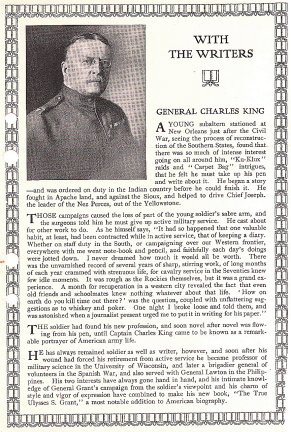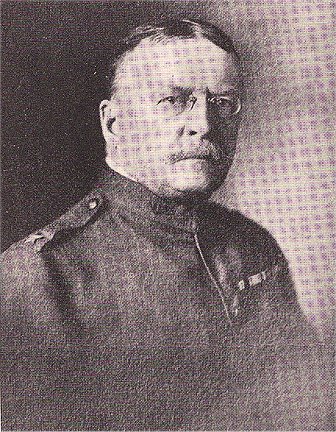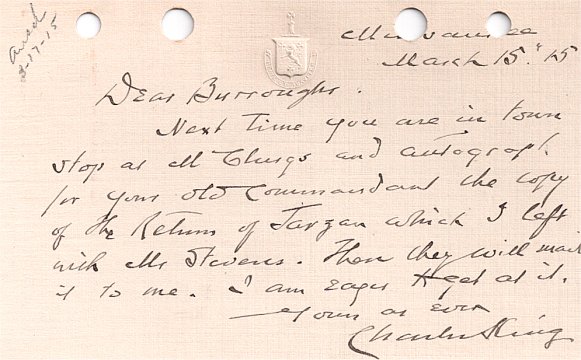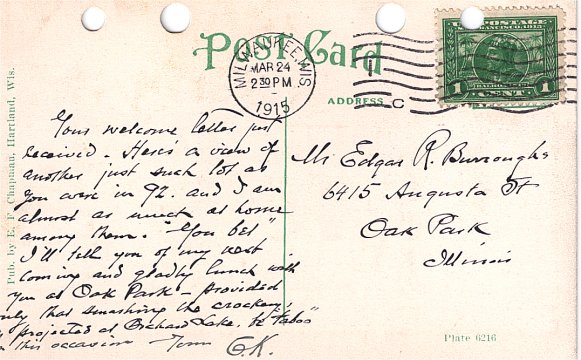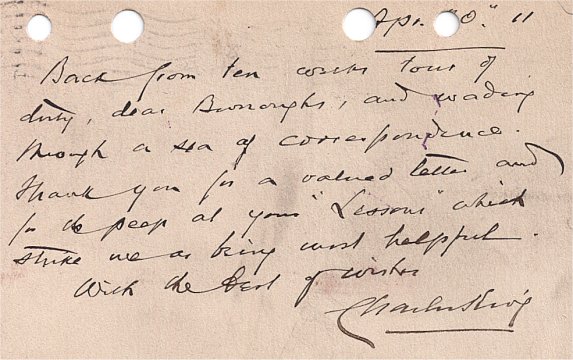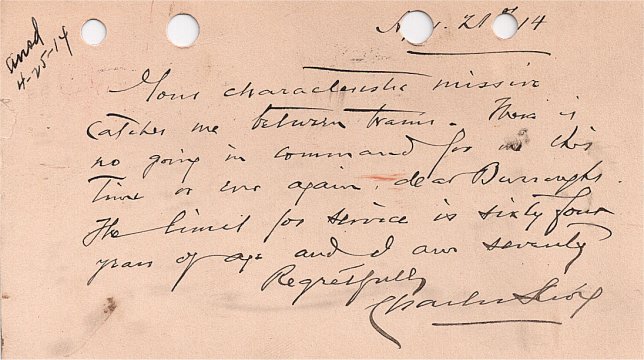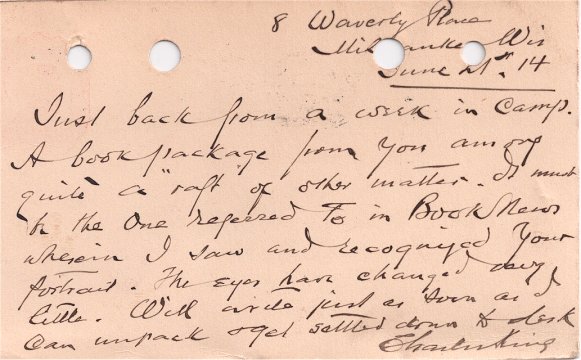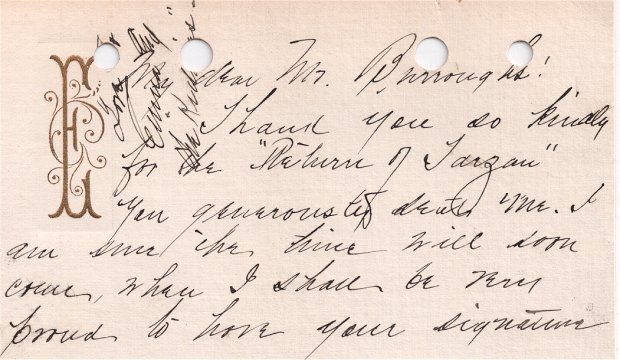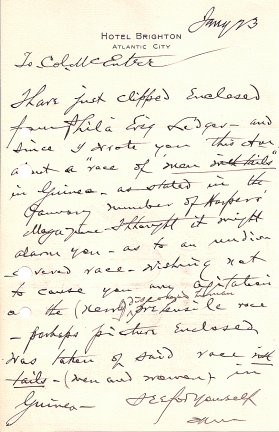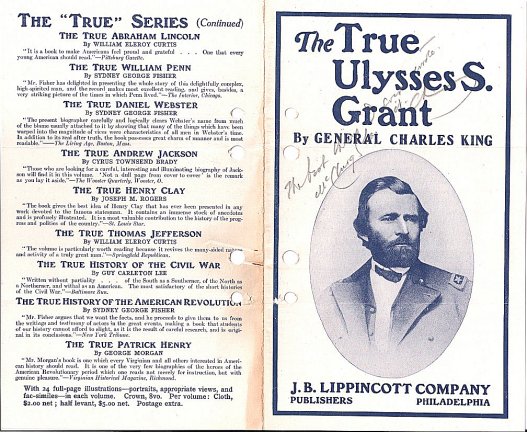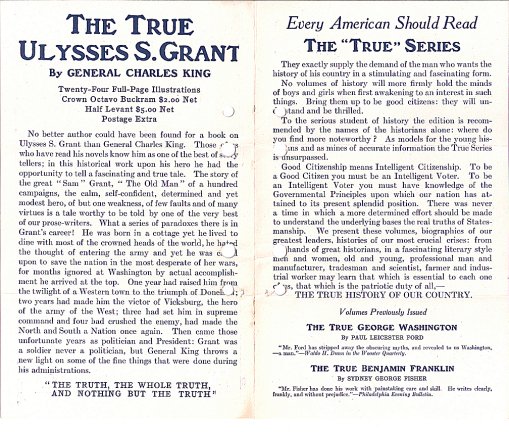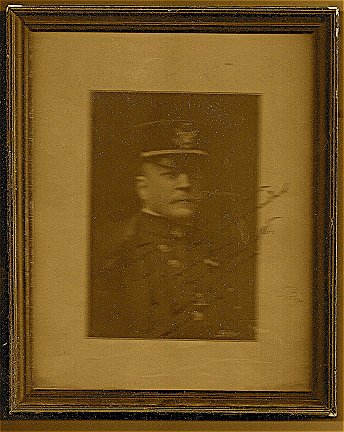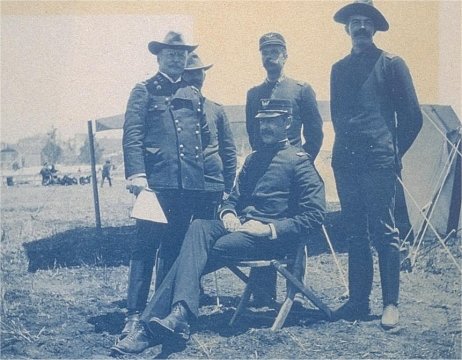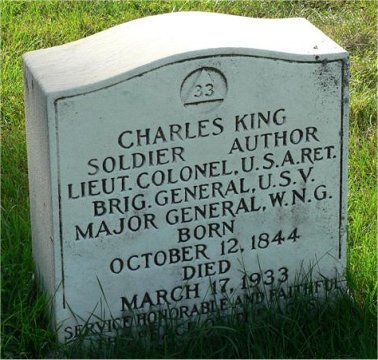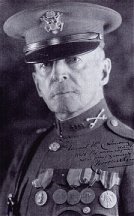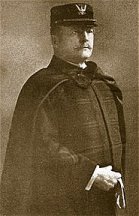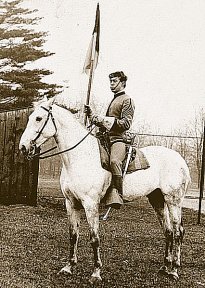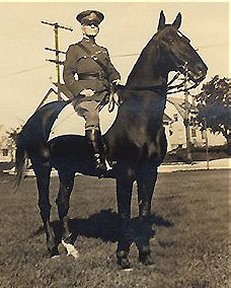Captain Charles King in his uniform for the
"Carnival of Authors," 1883.
Courtesy State Historical Society of Wisconsin.
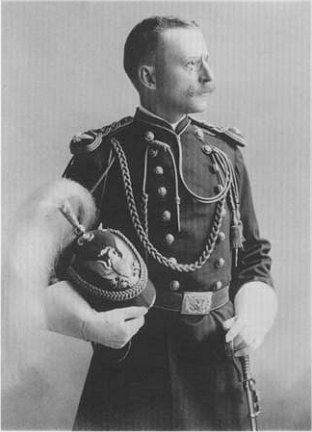 Charles
King (1844-1933) never intended to make writing his career; he was
bent on becoming a professional soldier. After an initial taste of the
military at the beginning of the Civil War when he served his father, General
Rufus King, along the Potomac near Washington, D.C., he entered West Point.
By the time he graduated, the Civil War was over, and he was attached to
the army of occupation in Louisiana, headquartered in New Orleans. Eventually
he transferred to the U.S. Cavalry and was posted west to pursue Indians.
In 1874, during a skirmish with Apaches at Sunset Pass, Arizona Territory,
his right arm was shattered by a bullet. Though the wound healed slowly,
he participated in the 1876 campaign against the Sioux, before and after
the Battle of Little Bighorn, and the following year against Chief Joseph's
Nez Perce.
Charles
King (1844-1933) never intended to make writing his career; he was
bent on becoming a professional soldier. After an initial taste of the
military at the beginning of the Civil War when he served his father, General
Rufus King, along the Potomac near Washington, D.C., he entered West Point.
By the time he graduated, the Civil War was over, and he was attached to
the army of occupation in Louisiana, headquartered in New Orleans. Eventually
he transferred to the U.S. Cavalry and was posted west to pursue Indians.
In 1874, during a skirmish with Apaches at Sunset Pass, Arizona Territory,
his right arm was shattered by a bullet. Though the wound healed slowly,
he participated in the 1876 campaign against the Sioux, before and after
the Battle of Little Bighorn, and the following year against Chief Joseph's
Nez Perce.
But by then the effects of his wound forced him to consider
retirement. He returned to his hometown of Milwaukee in 1879. At a men's
luncheon he overheard some disparaging remarks about the easy life of the
cavalryman on the Indian frontier. Fired up, he put together an account
of a rearguard action against the Sioux at Slim Buttes, Dakota Territory,
in which he had fought, and presented it as a talk to the same lunch
group. Someone from the Sentinel, his father's old newspaper, heard him,
asked for a written version, and printed it in the new Sunday supplement.
His narrative was well written, graphic, and thrilling. It was an immediate
success, and more articles followed. A year later, the Sentinel Press published
the popular series, which comprised King's eyewitness accounts of the war
against the Sioux, as a book, Campaigning with Crook.
From that point on King used his frontier and military
experiences as background for a number of novels and short stories. Unexpectedly,
he found writing congenial, and it was something he could do even with
his maimed right arm, though with some discomfort. His first published
novel, The Colonel's Daughter by "Captain Charles King, U.S.A.,"
appeared early in 1883, became a best-seller, and subsequently remained
the most popular of all his novels. A review at the time noted that "the
author's style entitles him to rank among the best of modern novelists."
After completing several more books himself, he hired an amanuensis and
went on to publish well over sixty books in his active career. More than
fifty of these were novels, produced at a rate of nearly two a year; the
last, Lanier of the Cavalry, appeared in 1909. In addition, he published
some 250 short stories during the same time period. His national reputation
persisted throughout, founded as it was on the realism and authenticity
of his accounts of army life in peace and war.
Through all of this he maintained his involvement in the
military. He served in the old state guard, in the National Guard, and
in the University of Wisconsin Military Science Department during the administrations
of Governors Rusk and Hoard and into the beginning years of that of Governor
Peck, at which time he retired from such duties. In 1895 the newly elected
Governor Upham, an old army comrade, named him adjutant general of Wisconsin
and promoted him to brigadier general. General King was activated during
the Spanish-American War and saw action in the Philippines, then retired
again. In 1904 he was recalled by the La Follette administration to head
the Wisconsin National Guard. It was largely through his work that the
guard earned its outstanding reputation --- so outstanding that it was
sent to Texas in the summer of 1916 to protect against border incursions
by Pancho Villa, the Mexican revolutionary. The guard was called up again
within days of America's entry into World War I, when it was combined with
the Michigan National Guard to form the famous 32nd "Red Arrow" Division.
General King remained active in state military matters almost up to his
death at the age of 88.
Excerpt
from Campaigning with Crook by Captain Charles King, U.S.A.
Chapter Nine: The Fight of the Rear Guard
Crook's column on the Tongue River
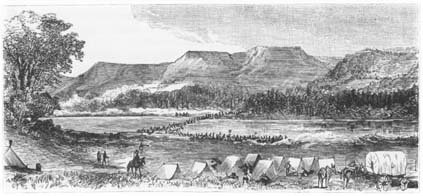 Ragged
and almost starving, out of rations, out at elbows and every other exposed
angle, out of everything but pluck and ammunition, General Crook gave up
the pursuit of Sitting Bull at the head of Heart River. The Indians had
scattered in every direction. We had chased them a month, and were no nearer
than when we started. Their trail led in as many different directions as
there are degrees in the circle; they had burned off the grass from the
Yellowstone to the mountains, and our horses were dropping by scores, starved
and exhausted, every day we marched. There was no help for it, and only
one thing left to do. At daybreak the next morning the orders came, "Make
for the Black Hills --- due south by compass --- seven days' march at least,"
and we headed our dejected steeds accordingly and shambled off in search
of supplies.
Ragged
and almost starving, out of rations, out at elbows and every other exposed
angle, out of everything but pluck and ammunition, General Crook gave up
the pursuit of Sitting Bull at the head of Heart River. The Indians had
scattered in every direction. We had chased them a month, and were no nearer
than when we started. Their trail led in as many different directions as
there are degrees in the circle; they had burned off the grass from the
Yellowstone to the mountains, and our horses were dropping by scores, starved
and exhausted, every day we marched. There was no help for it, and only
one thing left to do. At daybreak the next morning the orders came, "Make
for the Black Hills --- due south by compass --- seven days' march at least,"
and we headed our dejected steeds accordingly and shambled off in search
of supplies.
Through eleven days of pouring, pitiless rain we plodded
on that never-to-be-forgotten trip, and when at last we sighted Bare Butte
and halted, exhausted, at the swift-flowing current of the Belle Fourche,
three-fourths of our cavalry, of the Second, Third, and Fifth regiments,
had made the last day's march afoot. One-half our horses were broken down
for good, one-fourth had fallen never to rise again, and dozens had been
eaten to keep us, their riders, alive.
Enlivening incidents were few enough, and --- except one
--- of little interest to Milwaukeeans. That one is at your service. On
the night of September 7th we were halted near the headwaters of Grand
River. Here a force of one hundred and fifty men of the Third Cavalry,
with the serviceable horses of that regiment, were pushed ahead under Major
Anson Mills, with orders to find the Black Hills, buy up all the supplies
he could in Deadwood, and then hurry back to meet us. Two days after, just
as we were breaking up our cheerless bivouac of the night, a courier rode
in with news that Mills was surrounded by the Indians twenty miles south,
and every officer and man of the Fifth Cavalry whose horse had strength
enough to trot pushed ahead to the rescue. Through mud, mist, and rain
we plunged along, and by half-past ten were exchanging congratulations
with Mills and shots with the redskins in as wealthy an Indian village,
for its size, as ever we had seen. Custer's guidons and uniforms were the
first things that met our eyes --- trophies and evidence at once of the
part our foe had taken in the bloody battle of the Little Big Horn. Mills
had stumbled upon the village before day, made a magnificent dash, and
scattered the Indians to the neighboring heights, Slim Buttes by name,
and then hung on to his prize like a bulldog, and in the face of appalling
odds, till we rode in to his assistance. That afternoon, reinforced by
swarms of warriors, they made a grand rally and spirited attack, but 'twas
no use. By that time we had some two thousand to meet them, and the whole
Sioux nation couldn't have whipped us. Some four hundred ponies had been
captured with the village, and many a fire was lighted and many a suffering
stomach gladdened with a welcome change from horse meat, tough and stringy,
to rib roasts of pony, grass-fed, sweet, and succulent. There is no such
sauce as starvation. . . .

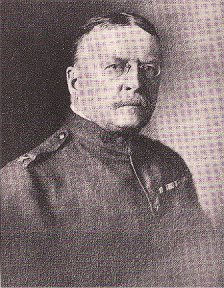
 Charles
King (1844-1933) never intended to make writing his career; he was
bent on becoming a professional soldier. After an initial taste of the
military at the beginning of the Civil War when he served his father, General
Rufus King, along the Potomac near Washington, D.C., he entered West Point.
By the time he graduated, the Civil War was over, and he was attached to
the army of occupation in Louisiana, headquartered in New Orleans. Eventually
he transferred to the U.S. Cavalry and was posted west to pursue Indians.
In 1874, during a skirmish with Apaches at Sunset Pass, Arizona Territory,
his right arm was shattered by a bullet. Though the wound healed slowly,
he participated in the 1876 campaign against the Sioux, before and after
the Battle of Little Bighorn, and the following year against Chief Joseph's
Nez Perce.
Charles
King (1844-1933) never intended to make writing his career; he was
bent on becoming a professional soldier. After an initial taste of the
military at the beginning of the Civil War when he served his father, General
Rufus King, along the Potomac near Washington, D.C., he entered West Point.
By the time he graduated, the Civil War was over, and he was attached to
the army of occupation in Louisiana, headquartered in New Orleans. Eventually
he transferred to the U.S. Cavalry and was posted west to pursue Indians.
In 1874, during a skirmish with Apaches at Sunset Pass, Arizona Territory,
his right arm was shattered by a bullet. Though the wound healed slowly,
he participated in the 1876 campaign against the Sioux, before and after
the Battle of Little Bighorn, and the following year against Chief Joseph's
Nez Perce.
 Ragged
and almost starving, out of rations, out at elbows and every other exposed
angle, out of everything but pluck and ammunition, General Crook gave up
the pursuit of Sitting Bull at the head of Heart River. The Indians had
scattered in every direction. We had chased them a month, and were no nearer
than when we started. Their trail led in as many different directions as
there are degrees in the circle; they had burned off the grass from the
Yellowstone to the mountains, and our horses were dropping by scores, starved
and exhausted, every day we marched. There was no help for it, and only
one thing left to do. At daybreak the next morning the orders came, "Make
for the Black Hills --- due south by compass --- seven days' march at least,"
and we headed our dejected steeds accordingly and shambled off in search
of supplies.
Ragged
and almost starving, out of rations, out at elbows and every other exposed
angle, out of everything but pluck and ammunition, General Crook gave up
the pursuit of Sitting Bull at the head of Heart River. The Indians had
scattered in every direction. We had chased them a month, and were no nearer
than when we started. Their trail led in as many different directions as
there are degrees in the circle; they had burned off the grass from the
Yellowstone to the mountains, and our horses were dropping by scores, starved
and exhausted, every day we marched. There was no help for it, and only
one thing left to do. At daybreak the next morning the orders came, "Make
for the Black Hills --- due south by compass --- seven days' march at least,"
and we headed our dejected steeds accordingly and shambled off in search
of supplies.
